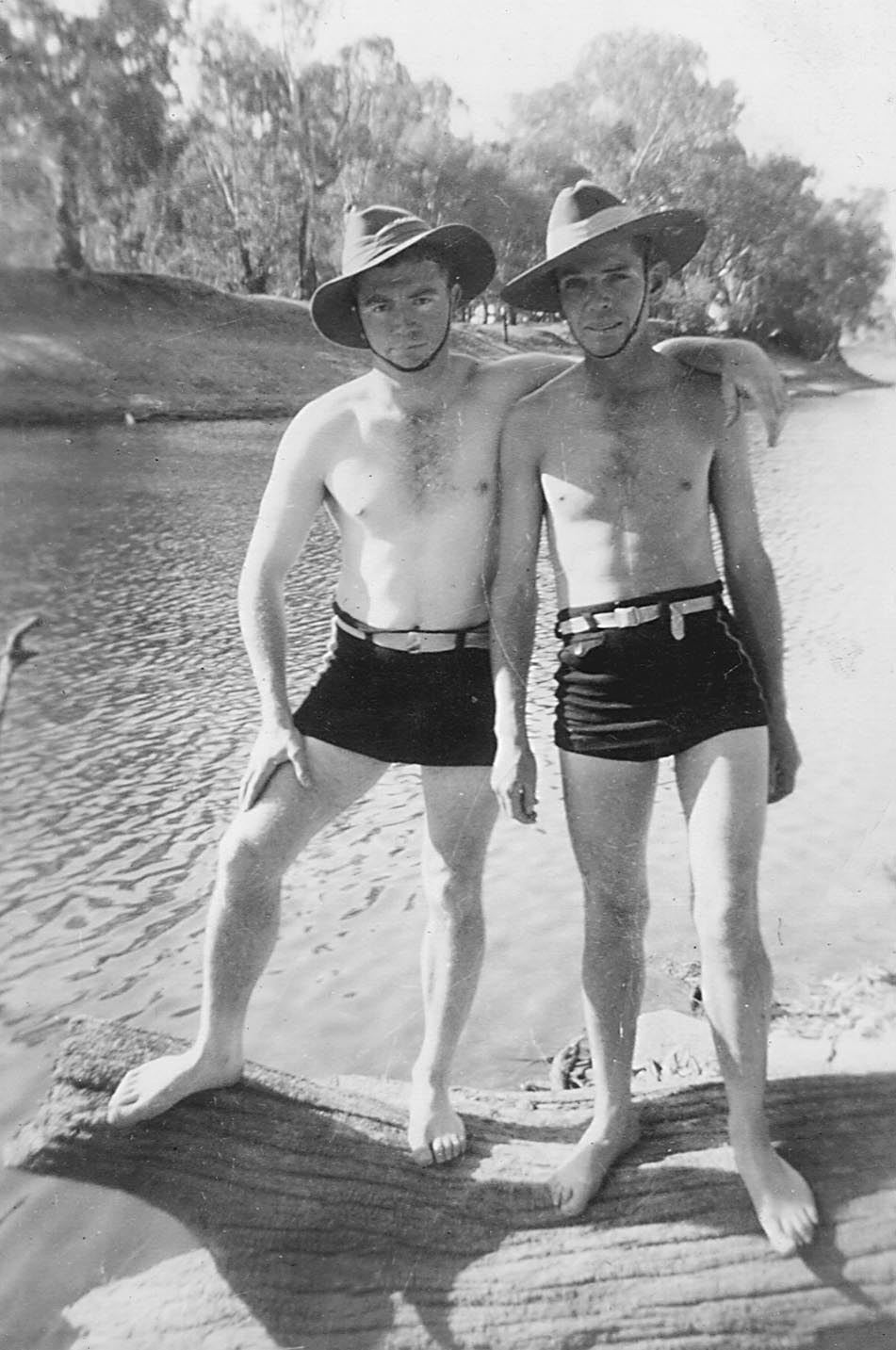
| HAYWIRE The Wartime Camps at Hay |
The Hay Historical Society's latest publication, Haywire: the War-time Camps at Hay, tells the story of the three internment and prisoner-of-war camps established at Hay during World War II. A large collection of documents, memoirs, original articles and newspaper reports have been gathered together in this book, illustrated with an extensive and varied selection of photographs and artworks. The construction of the camps, the arrival of internees and POWs, the garrison battalion, the military hospital, the farming enterprises, the murders in the Italian camp, the deaths of Japanese civilians and much more is included. The story of the first internees is re-told, mostly German and Austrian Jewish refugees sent out on the Dunera, with much new material including a diary of the voyage, and many interviews. The artists amongst them have a special section on their creative contribution to Australia. War-time brings out the best and the worst in people, and Hay was no different in this regard. But Hay faced a further challenge extra to the shortages, strains and sorrows of war. The township's isolated position in the Western Riverina made it the ideal place for the military authorities to locate some of the most worrying of their charges, the internees of enemy nationality and unknown allegiance, and the prisoners-of-war captured in the various spheres of battle, in Europe, the Middle East, and the islands north of Australia. |
|
|
Hay was chosen as the place to concentrate Japanese merchant seamen captured to the north of Australia, where some of them were thought to have been engaged in spying and intelligence operations for the Japanese navy. After the break-out of Japanese POWs at Cowra in August 1944, the largest prison break in military history, many of the survivors were sent to Hay. The most famous escapee, the Italian Edgardo Simoni, is featured. He was the only prisoner to escape from Hay, and not from the camp itself, but from the old Hay Gaol where he was on detention. An intriguing account of the secret signals operation at Hay is told by one of those involved. The experiences of a medical orderly working in a camp hospital makes fascinating reading. The POW camps at Hay represented the greatest increase in population ever to take place in the town, with thousands arriving in a matter of days. The construction of the camps was a major undertaking in itself. The necessities of food, shelter, occupation and security had to be provided for thousands of men, both prisoners and their guards; hospitals were set up, farms developed, water, sewerage, electricity and communications installed - all this in the middle of a devastating drought, marked by regular dust-storms. Haywire is A4 in size, 200 pages long and is printed on quality art paper. A special feature is a full colour section of reproductions of artworks and of historic camps postal memorabilia. A time-line is provided, the book is fully indexed, a glossary of military terms is included, and a selection of maps and plans helps the reader to follow the written account. A list of nearly a thousand Garrison members is included, with some fascinating information on their daily menus and provisions. This is an opportunity to acquire a unique volume of Riverina regional history with direct relevance to wider Australian military and social history. Cost:
$ 50 (which includes postage & handling within Australia).
|
This page has been accessed
